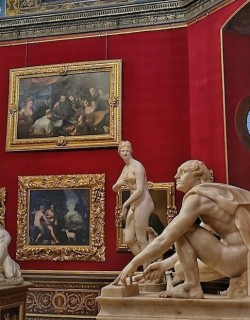Florence is Italy's greatest Renaissance city, and there is no better place to get to grips with the incredible flowering of art and culture of that golden age than the Uffizi Gallery. Beginning life in the 16th century as the showcase for the all-powerful Medici family's glittering art collection, over the centuries the Uffizi has grown to become the world's most important gallery of Renaissance art, and it remains a must-visit site for art lovers when on a tour of Florence .
Continuing our exploration of the Uffizi's amazing collection of art, in part two of our guide to the masterpieces of the Uffizi, we're taking a look at the best paintings in the gallery from the High Renaissance and Baroque eras. But first, just in case you missed it, make sure to read part one of our guide to the masterpieces of the Uffizi here before going any further!
Andrea del Verocchio and Leonardo da Vinci, The Baptism of Christ , c. 1475
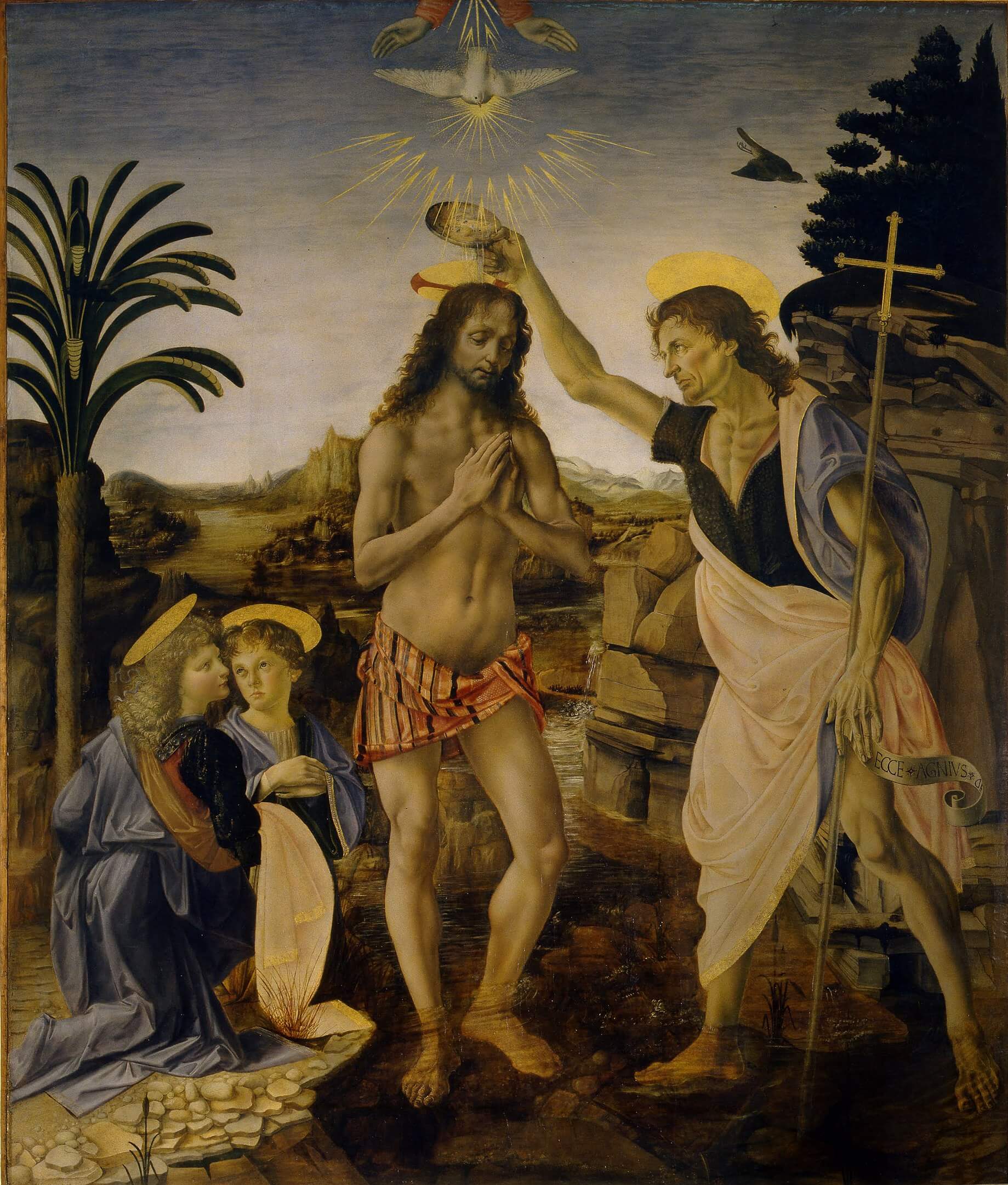
Depicting the pivotal moment of Christ's baptism at the hands of a gaunt looking at John the Baptist in the river Jordan, Andrea del Verocchio's masterful Baptism of Christ was painted in the 1470s to a commission from the monks of the church of San Salvi. Surviving various vicissitudes over the centuries - including the razing of San Salvi during the 1529 Siege of Florence and the transformation of its new monastic home of Santa Verdiana into a slaughterhouse under the auspices of Napoleon - the painting was finally transferred to the safety of the Uffizi Gallery in 1919.
The powerfully painted figures, serene landscape and harmonic composition make the painting a wonderful exemplar of Florentine Renaissance art. Yet despite the magisterial composition and virtuoso facture of Verocchio's work, the painting is best known to history for the angel in profile to the left of Christ, recorded as having been painted by the master's most famous pupil - a young Leonardo da Vinci, who so impressed contemporaries with his contribution that it wouldn't be long before he became one of the world's most sought-after painters in his own right.
Sandro Botticelli, Primavera (Spring), c.1482
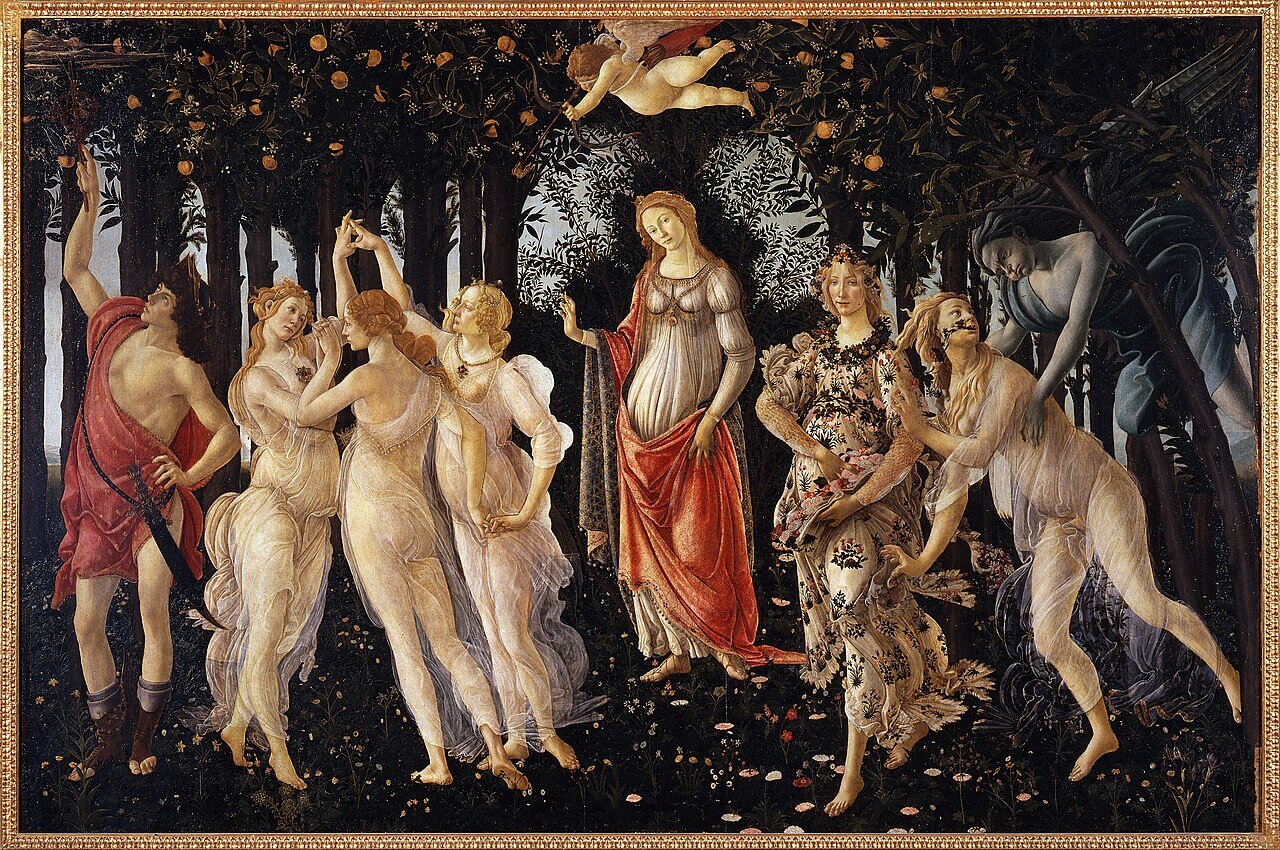
One of the most beautiful, and beautifully ambiguous, paintings in the Uffizi is Sandro Botticelli's riotous Primavera . Likely painted on the occasion of the learned Lorenzo di Pierfrancesco Medici in 1482, this magnificent canvas has beguiled and puzzled scholars in equal measure for centuries, and its meaning is still the cause of lively debate. On one level the canvas depicts an allegory of Spring and its life-bringing fertility, but there's a wealth of hidden meanings lurking in Botticelli's intriguing pastoral garden, and this eclectic cast of mythological characters holds many secrets that will probably never be fully explained.
The complicated allegory combines elements from the classical authors Ovid and Lucretius as well as the Renaissance poet Agnolo Poliziano. From the left, we see the messenger god Mercury poking at tree boughs laden with fruit; next to him, the Three Graces dance charmingly in provocatively diaphanous robes, while the figure at the center of the composition is likely Venus, above whom the blindfolded Cupid aims his love-bearing arrows. To the far right, the bitter wind Zephyrus chases the nymph Chloris, who transforms into the flower-covered Flora, the goddess of Spring. Demonstrating Botticelli's amazing attention to detail, over 200 distinct species of plants can be identified in the painting.
Sandro Botticelli, The Birth of Venus , c.1484
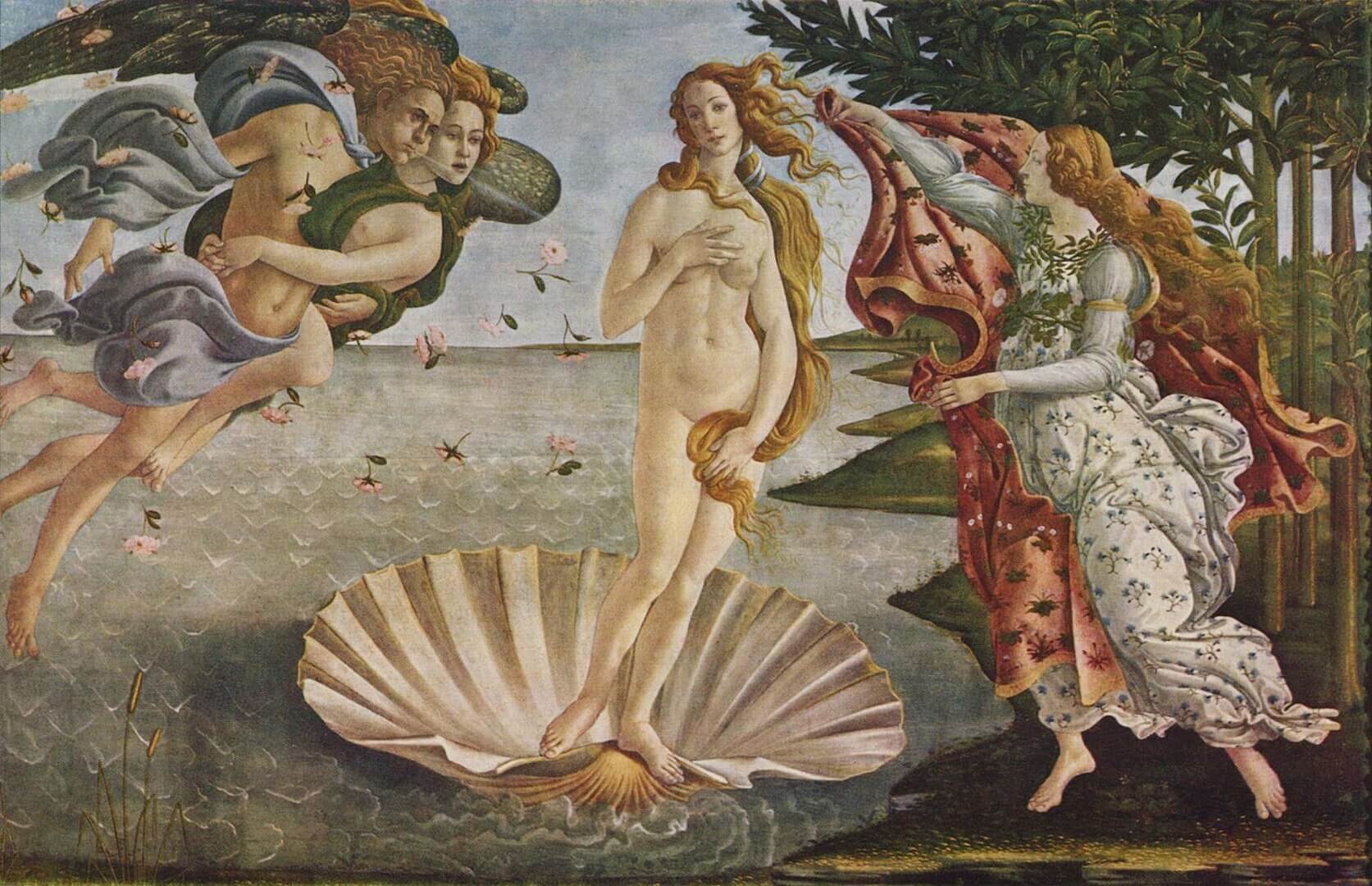
Perhaps no other painting of the Florentine Renaissance is more iconic than Botticelli's The Birth of Venus , probably painted a few years after Primavera . The title of this instantly recognizable composition is misleading, however: the canvas in fact depicts not the birth of the goddess, but instead her arrival on the island of Cyprus, a subject recounted in Ovid's Metamorphoses and more recently in the verses of Botticelli's poet friend Poliziano.
The painting sees a naked Venus rising serenely from the sea, borne to shore in a shell powered by the breath of the winds Zephyrus and Aura, pictured embracing on the left amidst a shower of roses. The painting is suffused with a mystical, unreal atmosphere, and is fully in line with the metaphysical and allegorical ideals that characterized the Neoplatonic philosophy that was in vogue in the Florentine circle of Lorenzo the Magnificent during the second half of the 15th century. The Birth of Venus had already achieved a considerable state of renown by the time Vasari wrote his Lives of the Artists in the mid 1500s, and today has pride of place in the Uffizi as one of the museum's greatest treasures - a must-see on a Uffizi Gallery tour.
Michelangelo Buonarroti, Doni Tondo , 1504-7
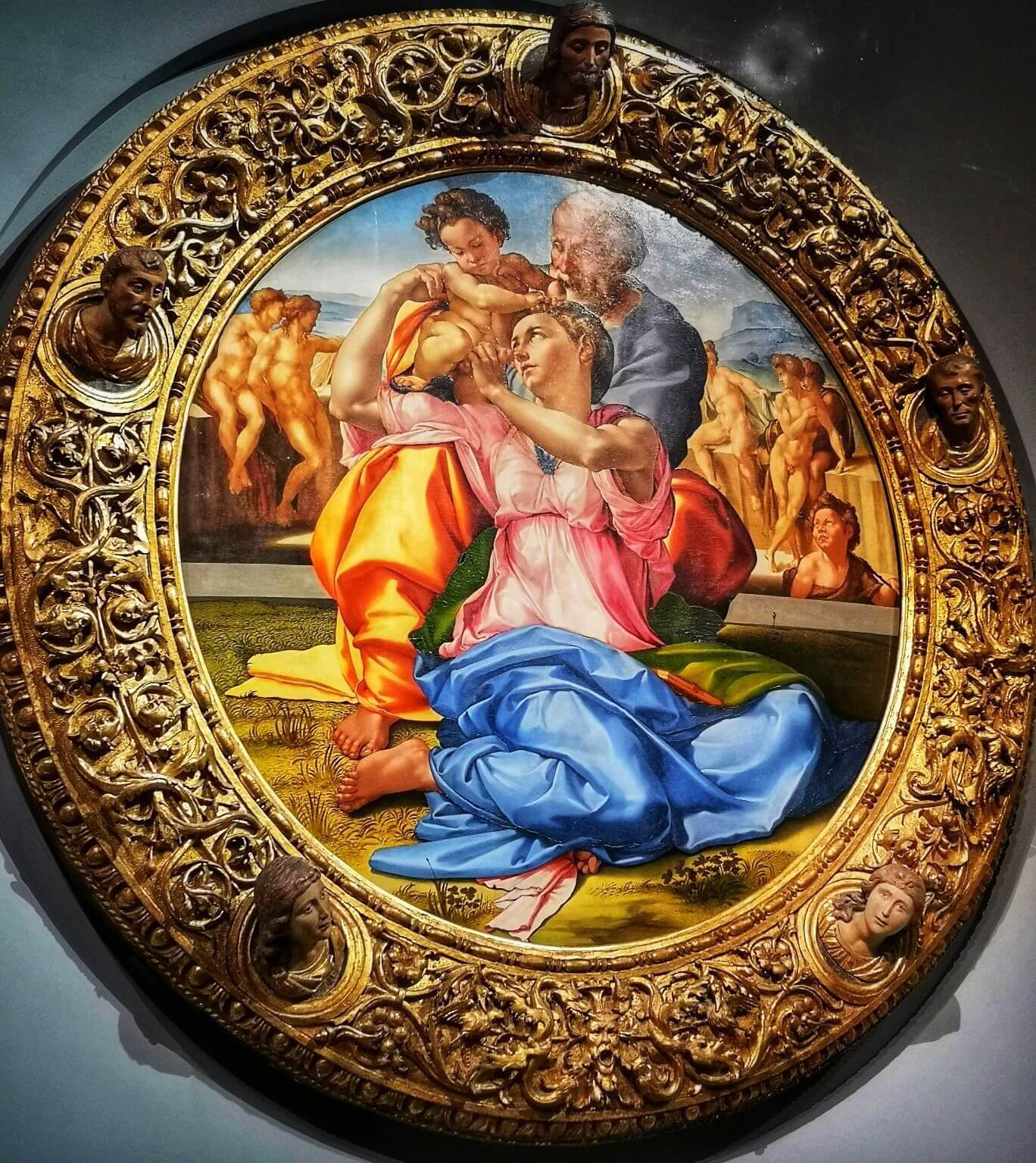
Expert at practically anything he turned his hand to, Michelangelo was the Renaissance man par excellence . His long career saw him excel in sculpture, painting, architecture and poetry in practically equal measure, although relatively few panel paintings survive from his hand. In fact, the only fully completed work in the medium of oil painting by Michelangelo to survive is this wonderful round painting in the Uffizi, known as the Doni Tondo.
The wealthy Agnolo Doni commissioned the painting to celebrate his marriage to Maddalena Strozzi - the Strozzi were among the most powerful families in Florence, and so the match was a real coup for Agnolo. The painting depicts the Holy Family ensconced in a blissful embrace, and seems to reflect Agnolo's hopes for a happy home life in the Doni household in the years to come.
The painting was completed shortly before Michelangelo was called to Rome to undertake the greatest - and least welcome - challenge of his career: the Sistine Chapel ceiling. In its striking use of bright primary colors and unexpectedly muscular, even sculptural figures, the Doni Tondo provides a tantalizing glimpse into the developing painterly aesthetic of Michelangelo that would explode into such fully-fleshed life on the Pope's ceiling in the coming years.
Raphael's Madonna of the Goldfinch , 1505-6
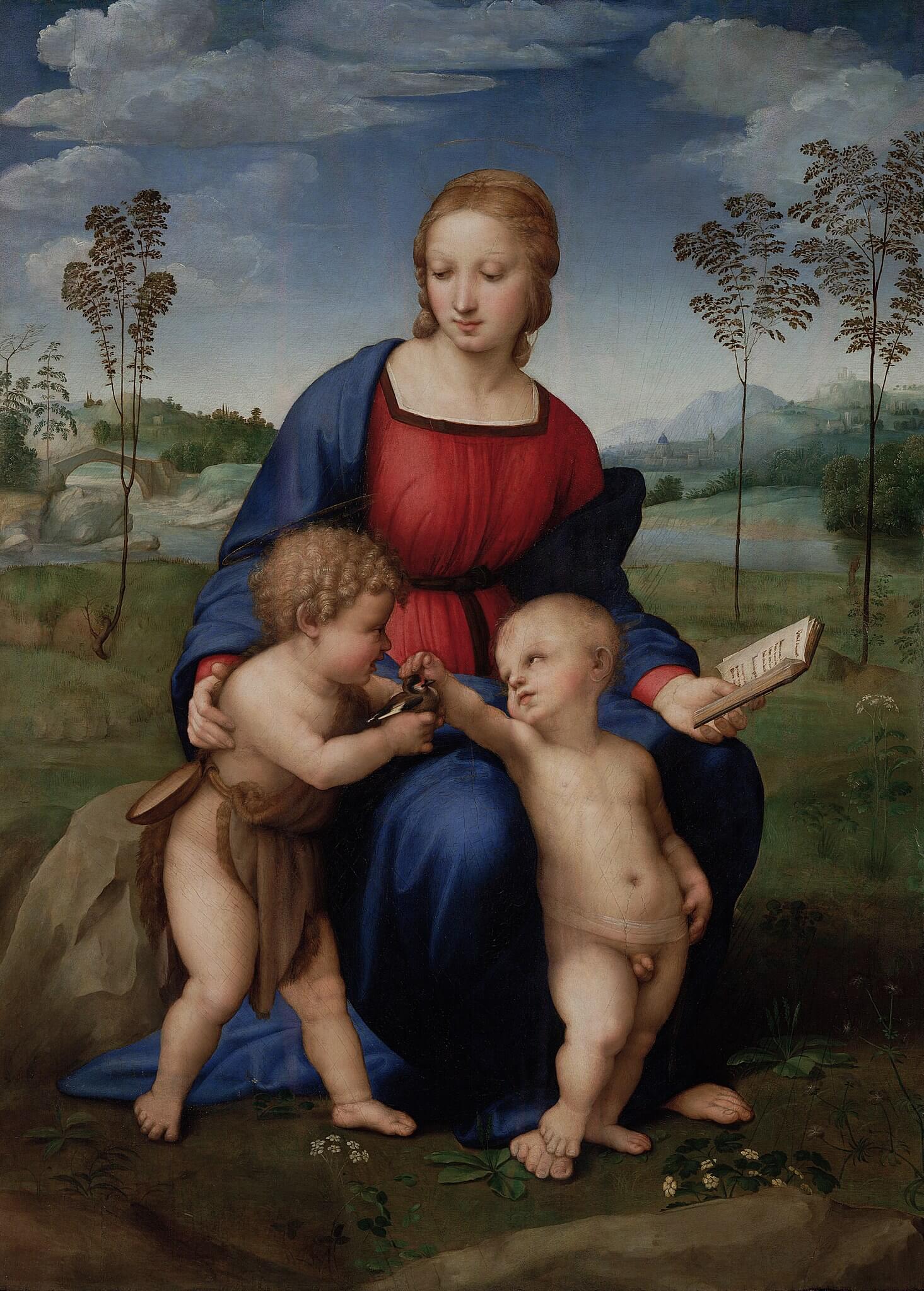
Dashing, charming and entirely at home in the refined court cultures of Renaissance Italy, Raphael was in many ways the complete antithesis of the somewhat dour Michelangelo. In artistic style the two differed greatly, too. Where Michelangelo's figures are powerful, striking and often superhuman, Raphael's paintings are instead typically populated with beautifully delicate madonnas and sweet children, suffused with an air of harmony and light that can't help but uplift the spirit.
A glorious example of the artist's serene style is the Uffizi's Madonna of the Goldfinch , one of art history's most copied paintings. Raphael painted the panel for his friend Lornezo Nasi on the occasion of his wedding, and the bucolic composition portrays the Virgin Mary seated on a rock, open book in hand as she looks over the young Christ and John the Baptist as they play with to goldfinch. The tranquil background is one of Renaissance art's finest.
Titian, Venus of Urbino, 1538
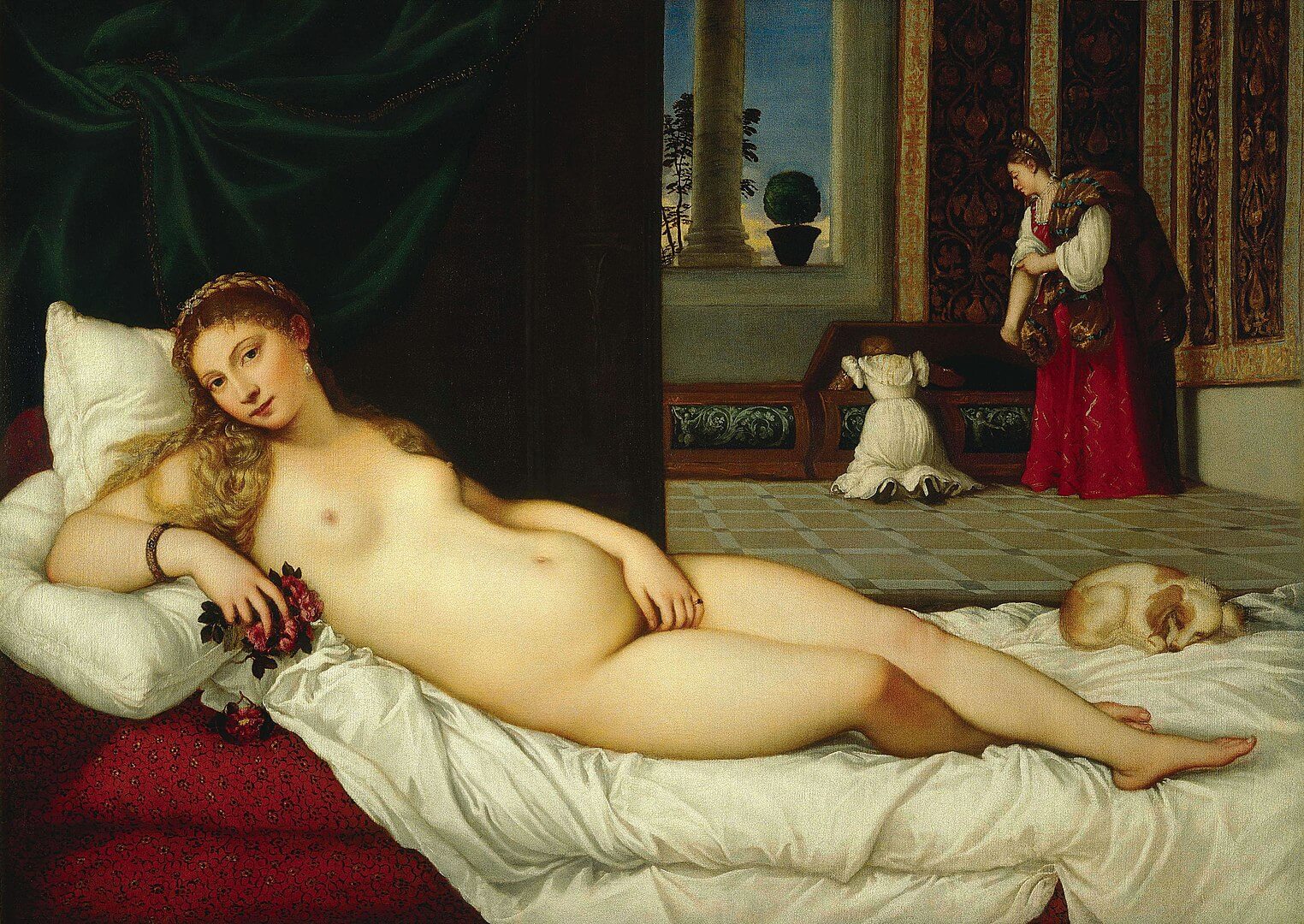
Rounding off the great Renaissance masterpieces in the Uffizi Gallery, Titian's Venus of Urbino is perhaps the renowned Venetian artist's most famous work. Titian was already the most famous painter in Venice by his early 20s; he was one of the art world's first celebrities and his fame spread far and wide over the 16th century. Contemporaries were particularly struck by Titian's ability to bring ancient mythology to life in extraordinarily sensual canvases, and nowhere is this better exemplified than the Venus of Urbino .
In this famous painting in the Uffizi gallery, we see the ancient god of love reclining nude on the rustling sheets of a bed, long blonde hair flowing down her shoulders as she stares frankly out at the viewer - entirely unashamed of her nakedness. In the background a pair of maidservants rummage through a cassone , or wedding chest, a piece of furniture that would have been very familiar to contemporary Renaissance viewers. The painting was probably commissioned by Guidobaldo II della Rovere on the occasion of his marriage to the young Giulia Varano, and was completed in 1538. Titian's masterful ability to conjure the different textures of various fabrics and materials, and above all his ability to render human flesh in all its living vitality, remains astounding to this day.
Caravaggio, Medusa , 1598
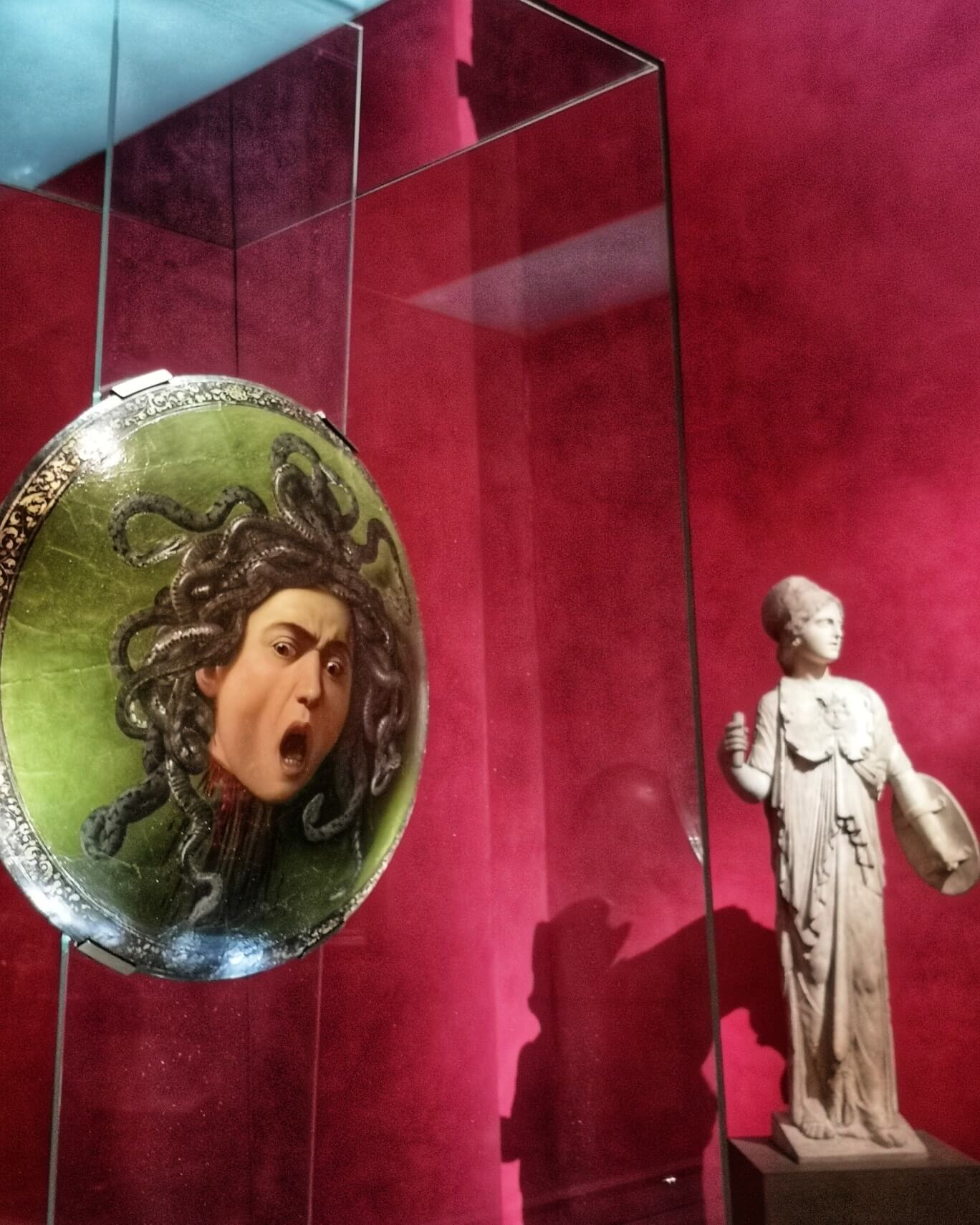
Once one of the great beauties of her age, Greek mythology recounts how Medusa was cursed by the goddess Athena with the terrible power to turn anyone who looked upon her visage to stone. The story goes that the hero Perseus overcame Medusa's dread power by gazing upon her via the reflection of his shield; duly protected, he decapitated Medusa and gifted her still-powerful head to Minerva, who used it to decorate her own shield.
Playing with the boundaries between reality and fiction, fact and fable, Caravaggio chooses to paint the head of Medusa - still streaming blood from her gaping neck whilst her serpent hair whips in an invisible wind - onto a ceremonial shield designed to be carried in parades. The shield was commissioned as a gift to the Tuscan Grand Duke by diplomat Francesco Maria del Monte, and still seems to possess the uncanny power to make one's blood run cold.
Artemisia Gentileschi, Judith and Holofernes , c. 1620
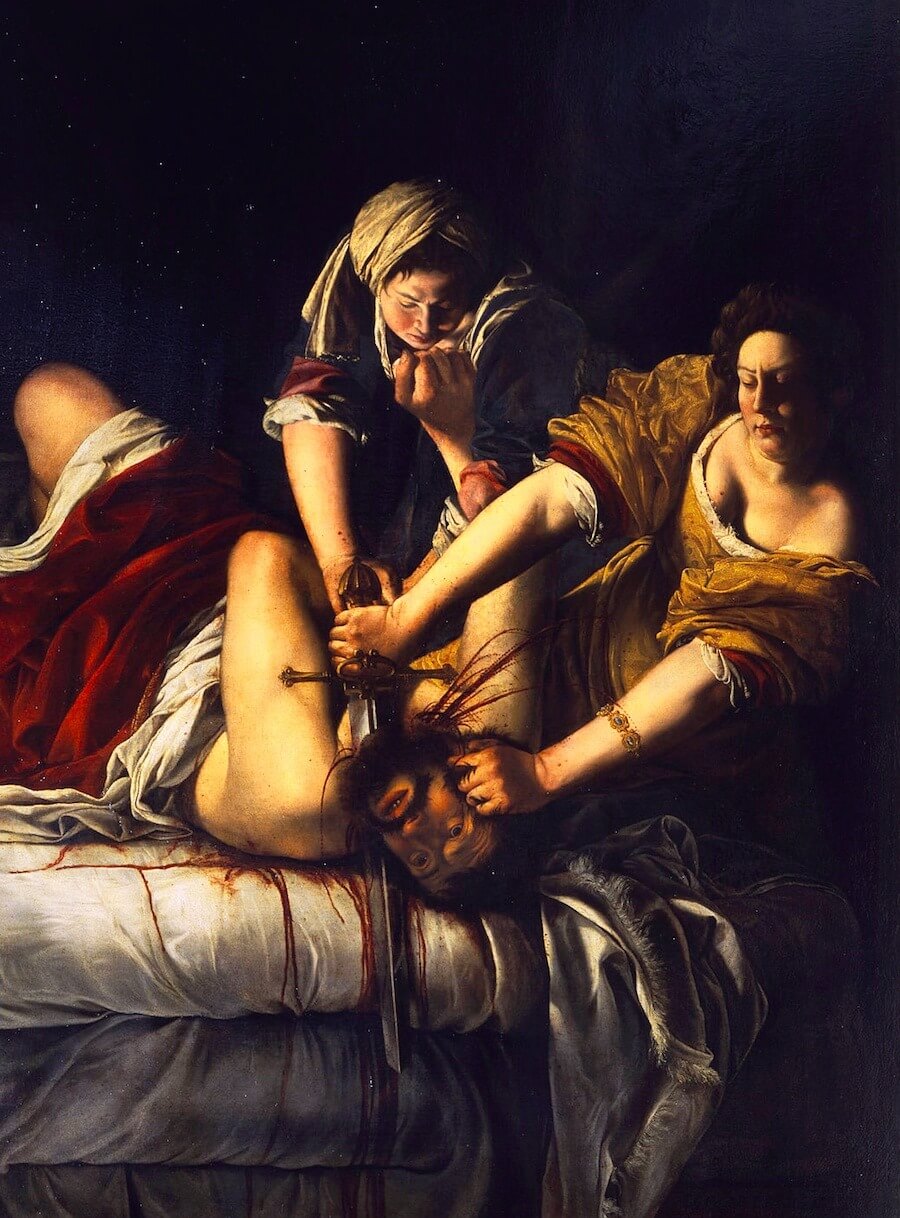
Did you know that one of the greatest painters of the Italian Baroque was a woman? Daughter of a renowned follower of Caravaggio, Artemisia Gentileschi's extraordinary rise to becoming one of Europe's most feted artists is a dramatic tale of sexual violence, rare skill and incredible fortitude. Artemisia was traumatically kidnapped as a young woman by a fellow painter, yet she overcame this brutal violence as well as institutionalized misogyny to become one of the most respected painters of her age, even landing the coveted position of court painter to the English crown.
Her masterpiece is this blood-spattered rendering of Judith Beheading Holofernes ; Artemisia's dramatic portrayal of the biblical heroine Judith slaying the entitled and thuggish general Holofernes seems to pulse with a powerfully feminist and anti-patriarchal energy, and loses nothing in comparison to Caravaggio's iconic version of the same subject housed in Rome's Palazzo Barberini. Some scholars see in Judith the characteristics of Artemisia herself, and our knowledge of the artist's biography inevitably encourages us to read the canvas as a personal expression of female agency in response to the sexual violence she endured as a young woman.
How to Visit the Uffizi Gallery
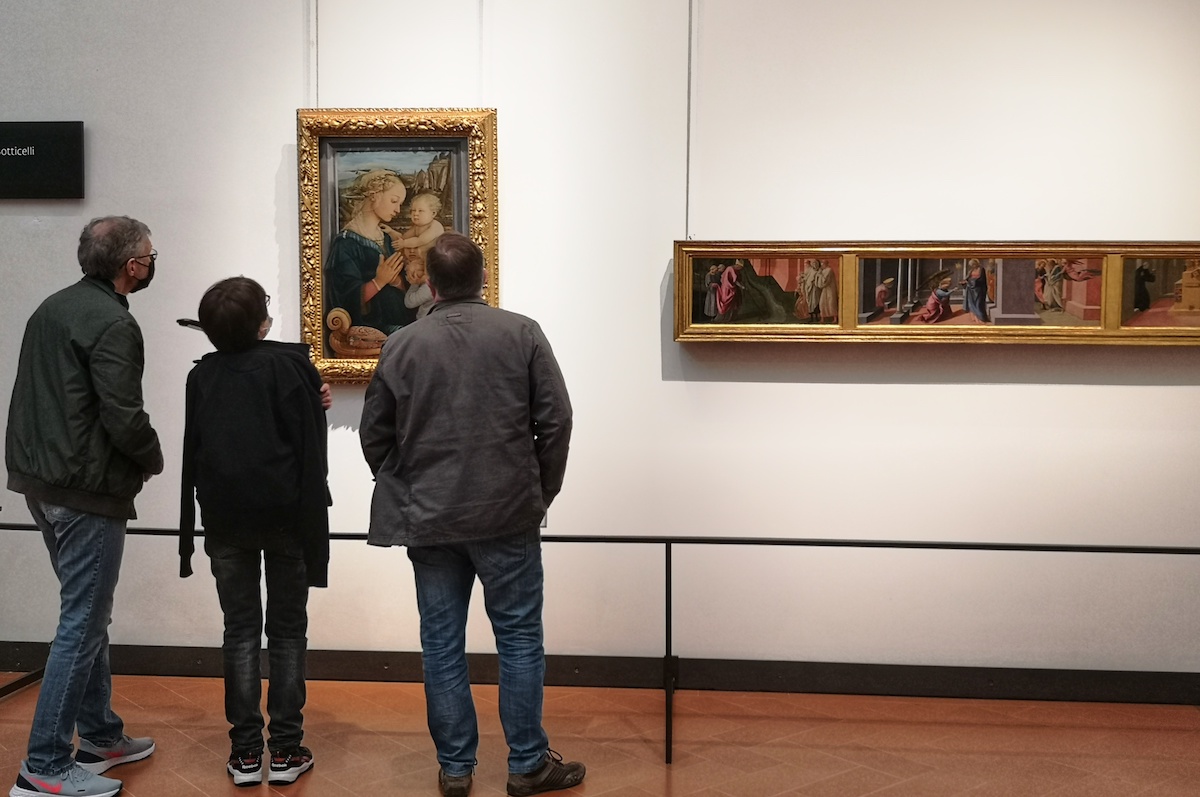
To book tickets to the Uffizi gallery, you will need to reserve your timed entrance in advance from the offical Uffizi website. Alternatively, take the stress out of your visit and gain a unique insight into the masterpieces of the gallery in the company of an expert guide on a guided tour of the Uffizi Gallery. Our tours are led by expert art historians, and skip-the-line tickets are included on all our Uffizi itineraries !
Through Eternity's team of expert art historians lead carefully crafted group tours of Florence as well as private Florence itineraries that help visitors get the most out of their time in the finest city of Renaissance Italy. If you're planning a trip to Florence, then check out our range of offerings and let us help you craft your next adventure!

